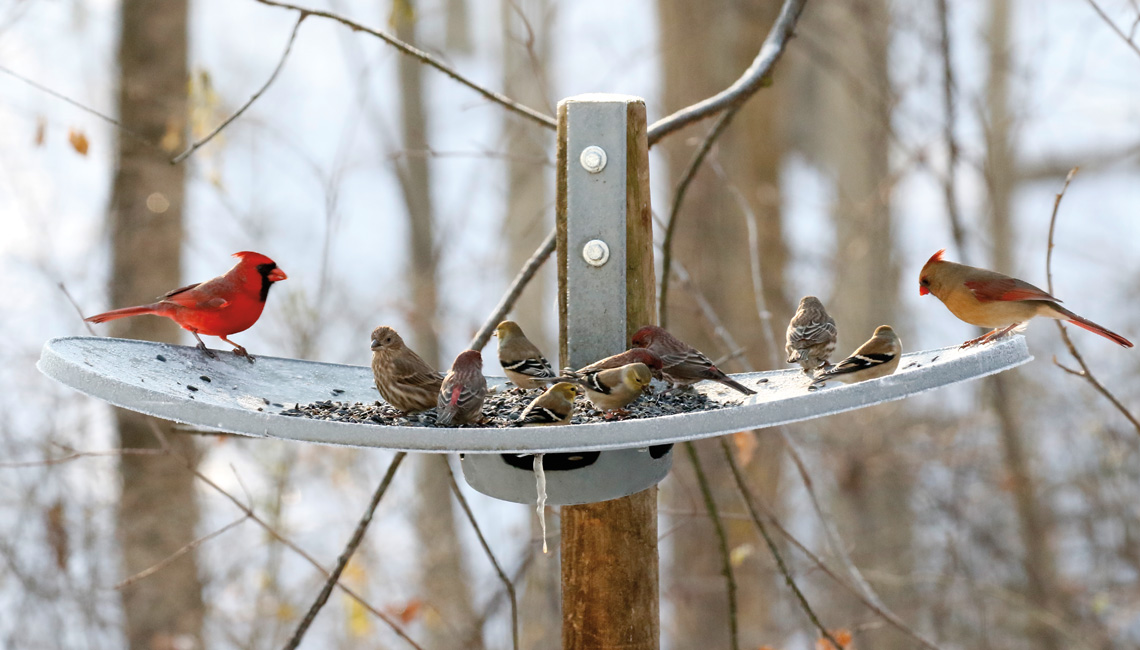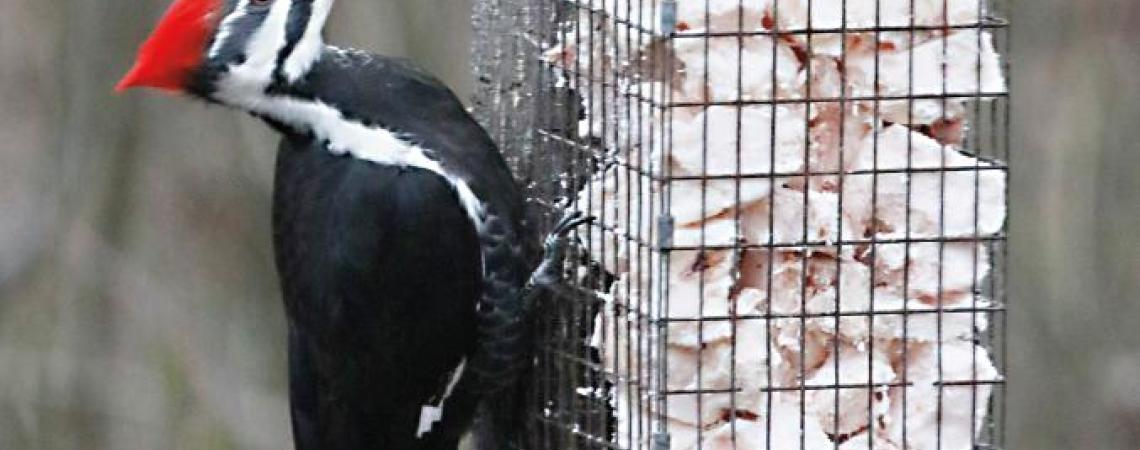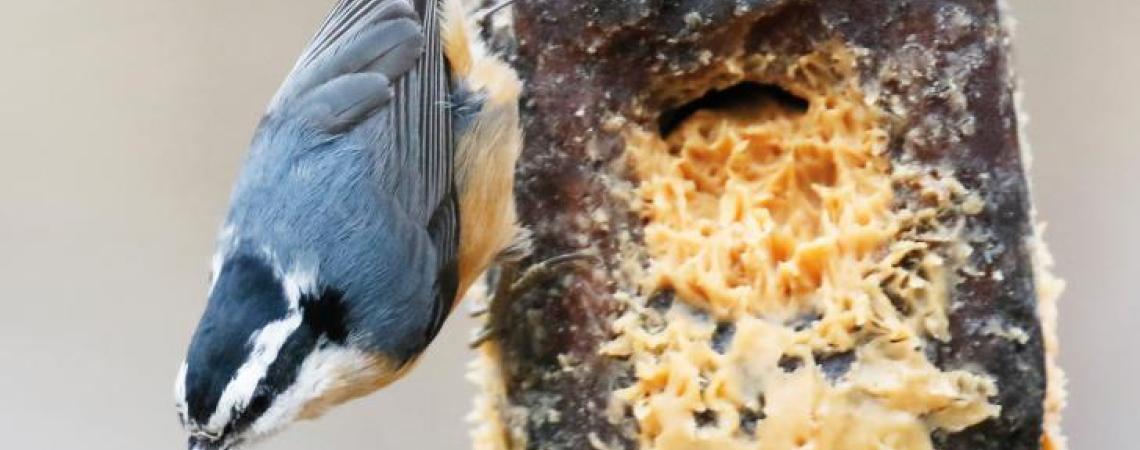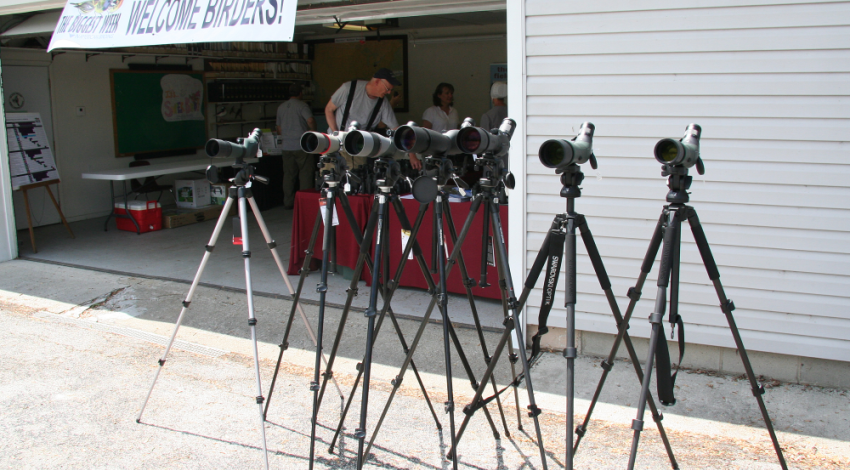I’m a backyard bird-feeding genius. (Please don’t ask my wife about that statement; she claims to have multiple examples of my less-than-genius status — and not just pertaining to bird feeding. But she does tend to exaggerate.)
Now, where was I? Oh, right: bird feeders.
An easy-to-construct cage-trap suet feeder attracted this pileated woodpecker.
I maintain nine bird feeders outside my home-office window. Only two of them were commercially manufactured, and one of those two was given to me as a gift. The other seven I cobbled together from material I had on hand. I don’t mind spending money when I have to, but if I can save a few bucks and still get the job done, I’m all for it, especially with the continually rising cost of bird feed.
To attract a variety of winter birds, I offer three types of food: black oil sunflower seed, beef suet, and peanut butter. Below are descriptions of the types of feeders I use (I think Rube Goldberg would be proud).
Satellite-dish sunflower seed feeder
If you’ve lived in rural Ohio more than a few years, you probably have a small, obsolete satellite dish taking up space in your garage, pole building, or barn. Have you ever thought of repurposing it into a tray feeder?
I took a hacksaw and shortened the metal arm attached to my old satellite dish to about 8 inches. I then drilled two holes in the arm a few inches apart vertically, and mounted the dish on a four-by-four treated-wood post, 7 feet long. Burying 2 feet of the post into the ground holds the feeder rock-solid. Attach the dish — concave side up, of course — to the post about 4 feet from the ground, using bolts or heavy wood screws as fasteners.
The last step is to drill a half-inch hole in the middle of the satellite dish to allow water to drain. An added advantage of this feeder is that during the summer, you can cork the hole to create a shallow birdbath. Not surprisingly, seed-eating birds are drawn to this feeder: Cardinals, blue jays, chickadees, tufted titmice, goldfinches, and purple finches are the usual visitors. Sparrows and dark-eyed juncos (also known as snowbirds) will eat the seed beneath the feeder dropped on the ground by the other birds.
Cage-trap suet feeder
This is another one you may already have on hand. I took a muskrat cage trap, removed one of its two doors, and wired the other door shut. By adding a 2-foot length of chain to the open top of the cage, I can now hang this suet feeder from a tree limb. I have a second, smaller cage trap that I mounted directly to a tree using plastic zip-tie fasteners.
Don’t have any cage traps? Taking some 1-inch wire mesh and shaping it into a 4-inch square a foot or two in length will accomplish the same thing. Essentially, you want to create a narrow hanging basket. Hairy, downy, and red-bellied woodpeckers, as well as flickers, are the usual visitors to suet feeders. If you’re lucky, maybe even a crow-sized pileated woodpecker may show up.
Pine-log peanut butter feeder
Start with a pine log measuring 3 to 4 inches in diameter and about 18 inches in length. Bore 1½-inch holes completely through the sides of the log, spacing the holes several inches apart and at right angles to one another. Screw in a hook eye to the top of the log for hanging and you’re in business.
Using a flexible spatula, fill the holes with inexpensive peanut butter. Both white-breasted and red-breasted nuthatches will love you. Over time, the relatively soft pine wood will absorb the peanut butter oil, making the feeder weather- and rot-resistant, so it can last for years.
If you have your own DIY winter bird feeder idea you’d like to share with other co-op members, email me a photo and brief description of your creation at whchipgross@gmail.com. I may use it in one of my future “Ask Chip” online Q&A columns.











